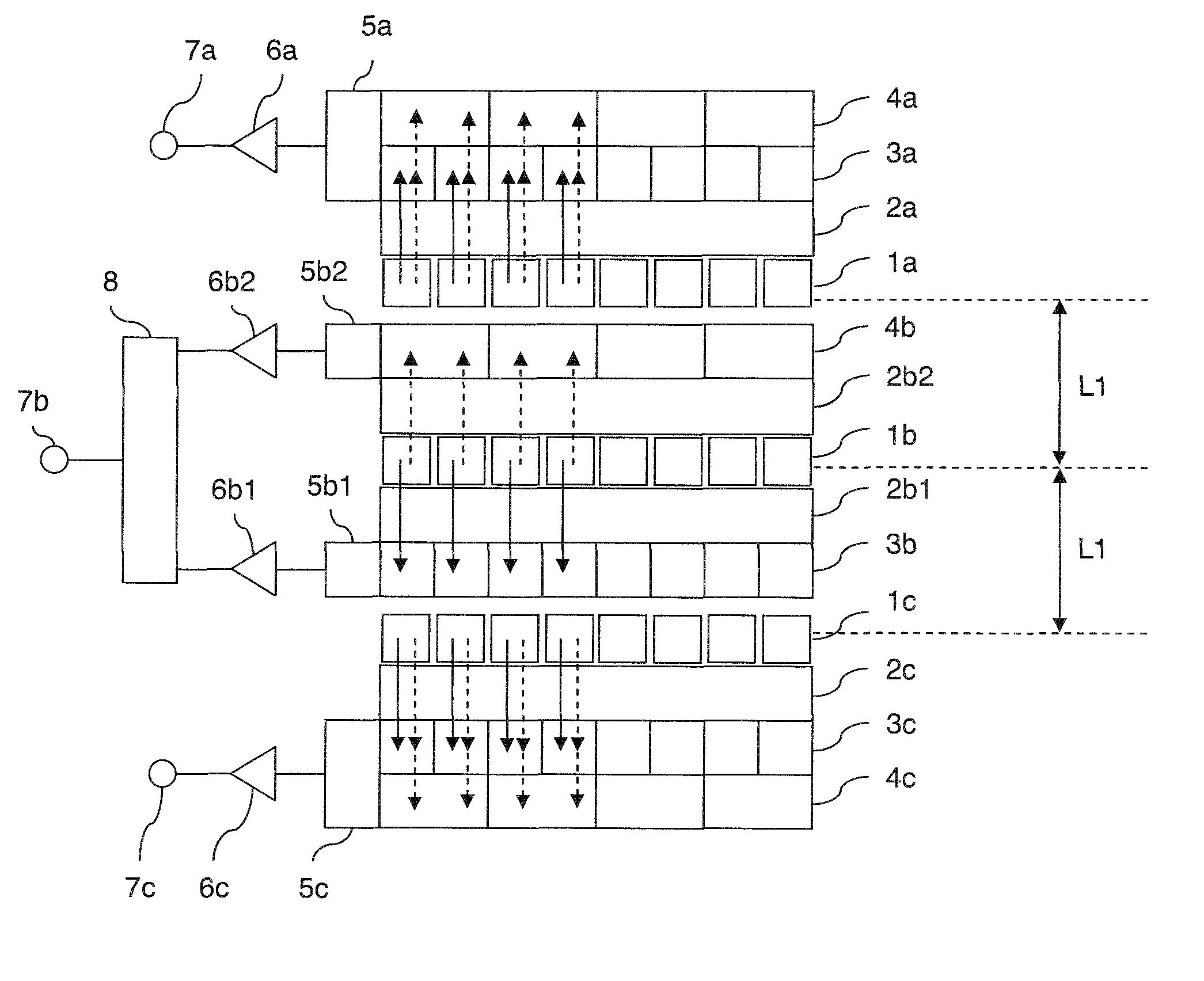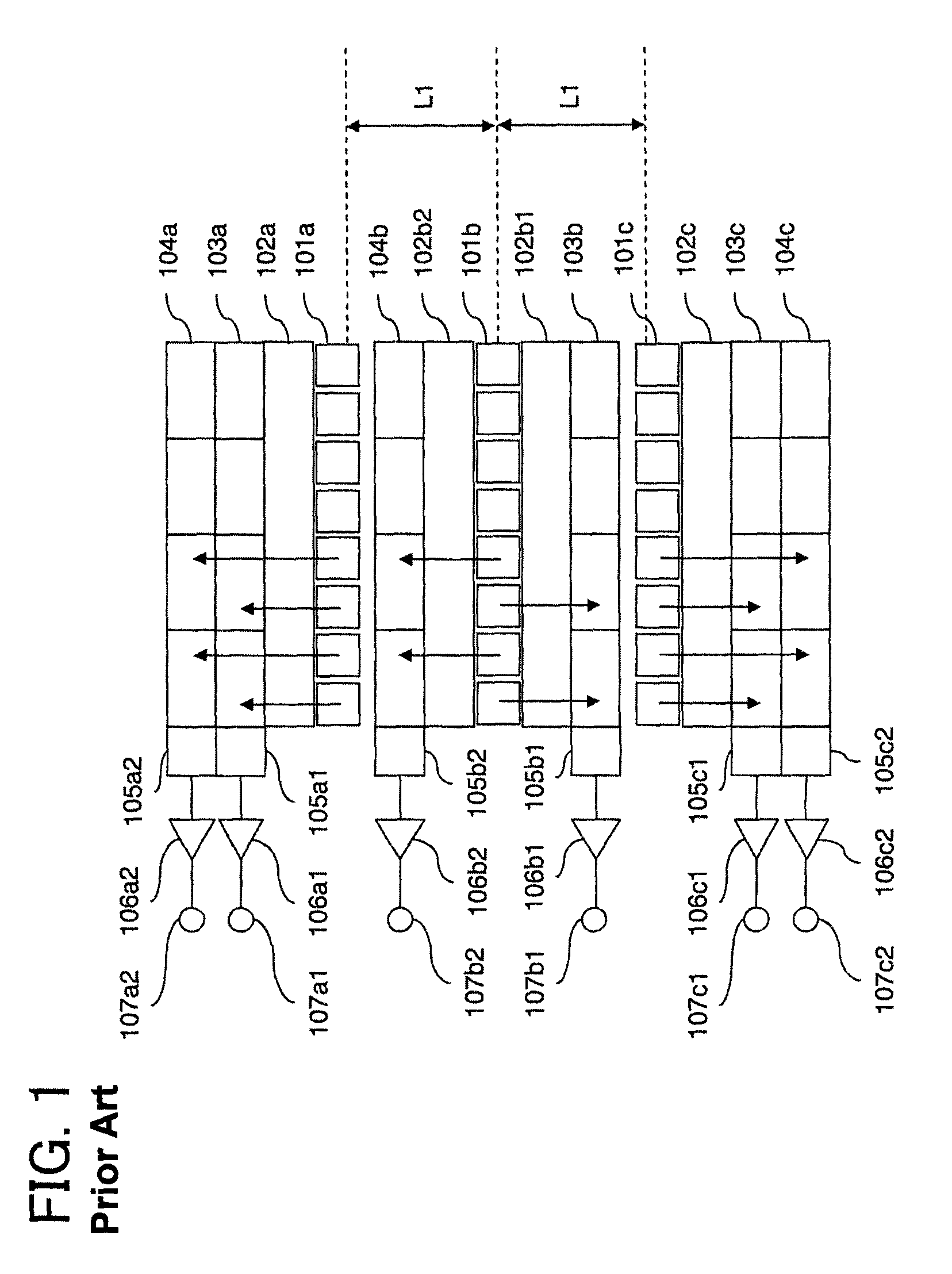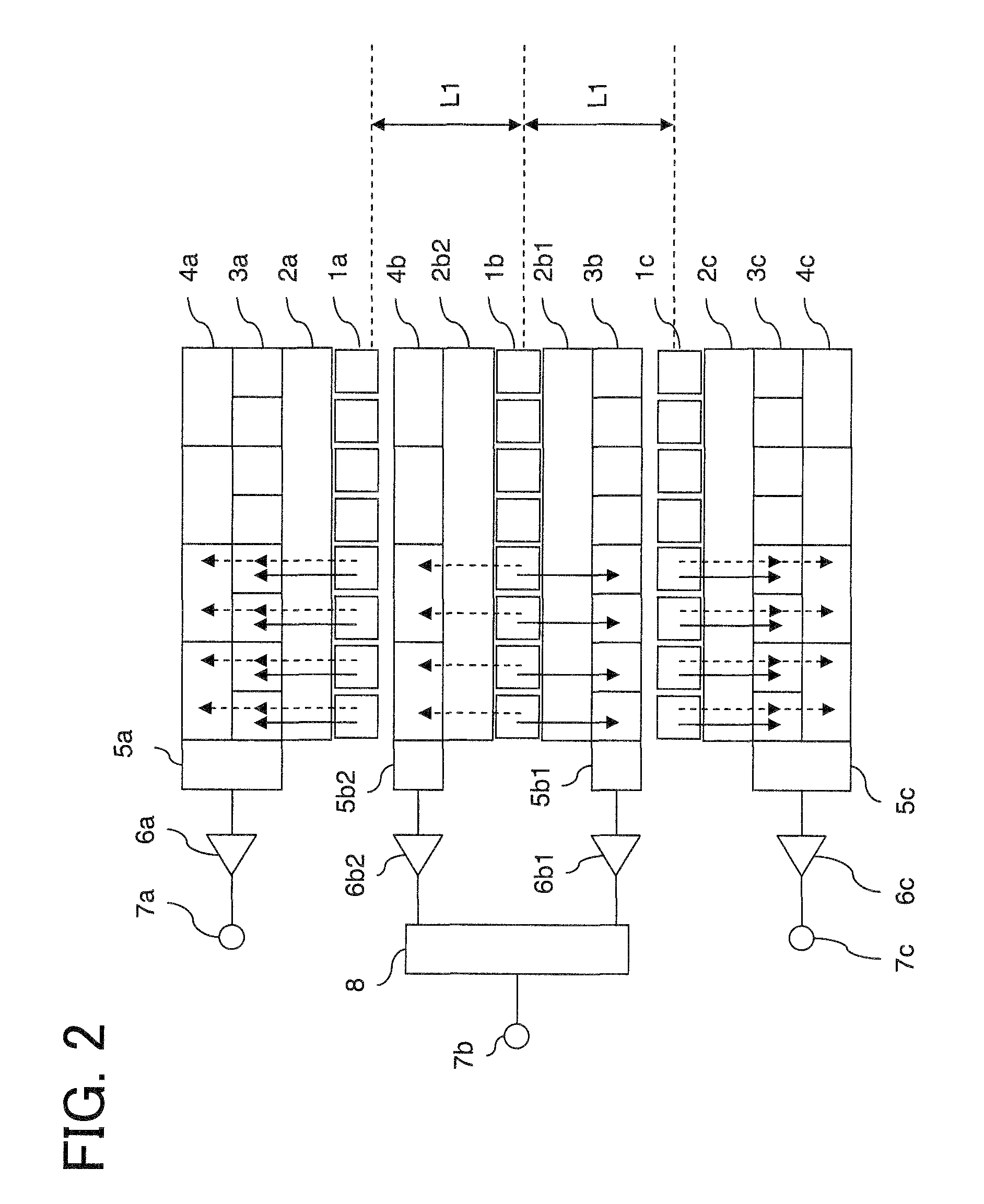Linear image sensor
a line-sequenced image and sensor technology, applied in the field of line-sequenced image sensors, can solve the problems of color data being affected, and achieve the effect of reducing line spacing and high power consumption of comparative color linear image sensors
- Summary
- Abstract
- Description
- Claims
- Application Information
AI Technical Summary
Benefits of technology
Problems solved by technology
Method used
Image
Examples
example 1
[0048]FIG. 2 shows a linear image sensor according to an example of the present invention. Each component of the image sensor is explained in the following.
[0049]Each photocell array 1a, 1b, 1c is a photodetector to convert incident photons into electrons. The number of photocells determines the resolution in the main scan direction. Here, 1a, 1b and 1c denote a red photocell array, a green photocell array, and a blue photocell array respectively.
[0050]Each transfer gate 2a, 2b1, 2b2 or 2c transfers electrons converted from photons in each photocell to one of analog shift registers.
[0051]The number of stages in each first analog shift register 3a, 3b, 3c used in the high resolution mode is same with the number of photocells in the photocell array.
[0052]The number of photocells in each second analog shift register 4a, 4b, 4c used in the low resolution mode is half the number of photocells in the photocell array.
[0053]A charge detector 5a receives charges from the first and second ana...
PUM
 Login to View More
Login to View More Abstract
Description
Claims
Application Information
 Login to View More
Login to View More - R&D
- Intellectual Property
- Life Sciences
- Materials
- Tech Scout
- Unparalleled Data Quality
- Higher Quality Content
- 60% Fewer Hallucinations
Browse by: Latest US Patents, China's latest patents, Technical Efficacy Thesaurus, Application Domain, Technology Topic, Popular Technical Reports.
© 2025 PatSnap. All rights reserved.Legal|Privacy policy|Modern Slavery Act Transparency Statement|Sitemap|About US| Contact US: help@patsnap.com



